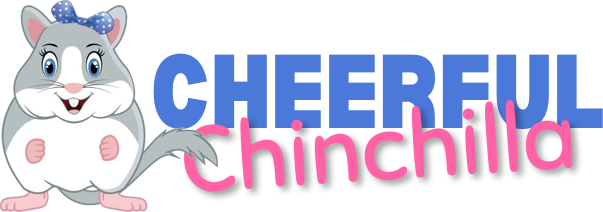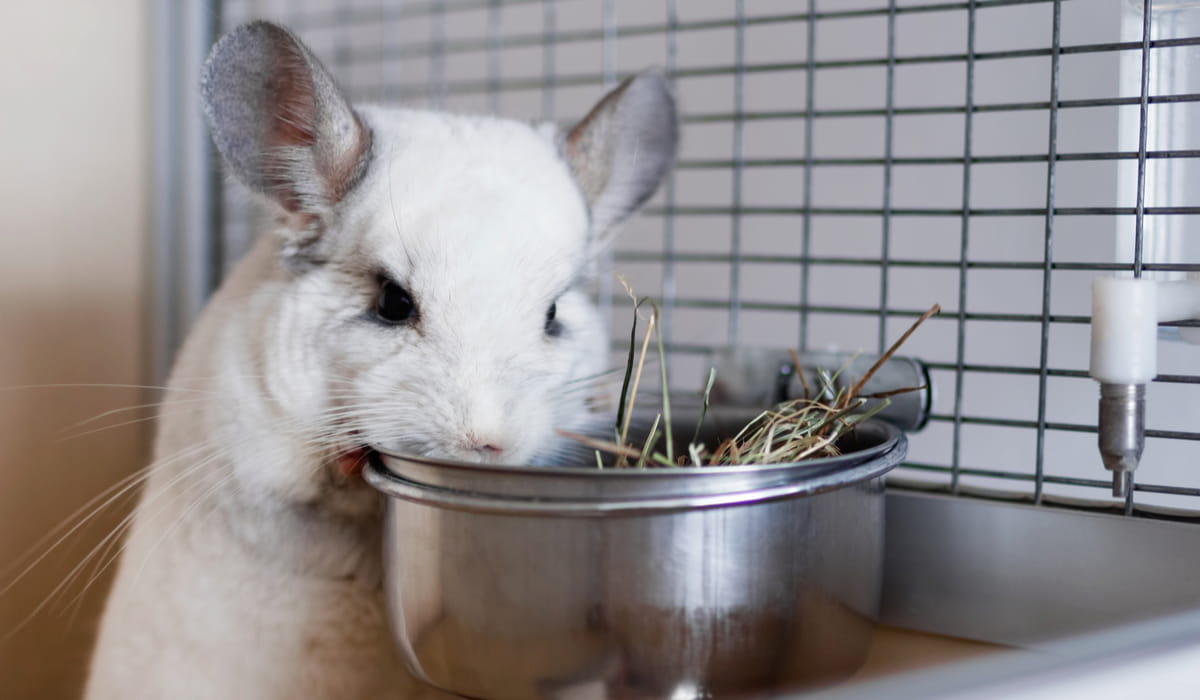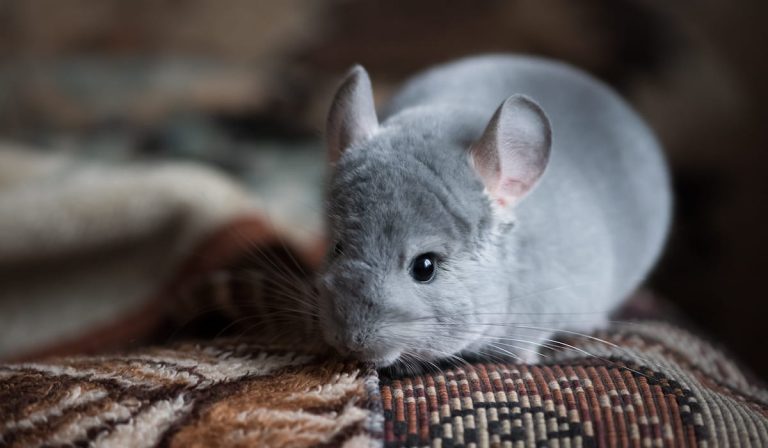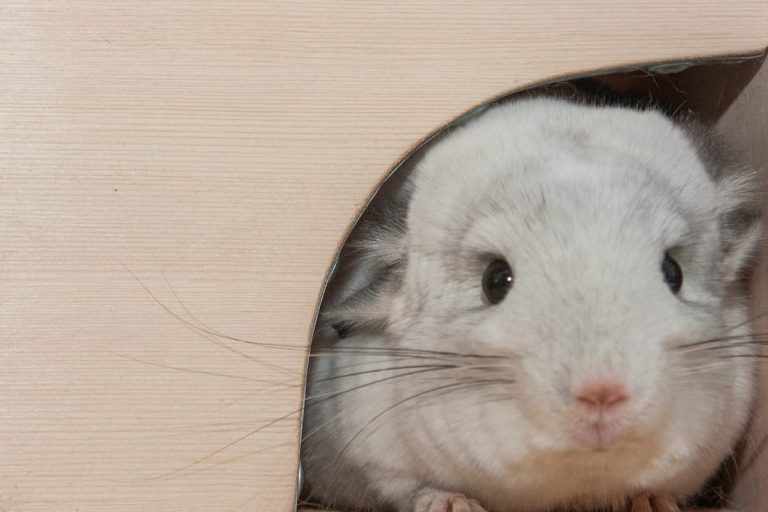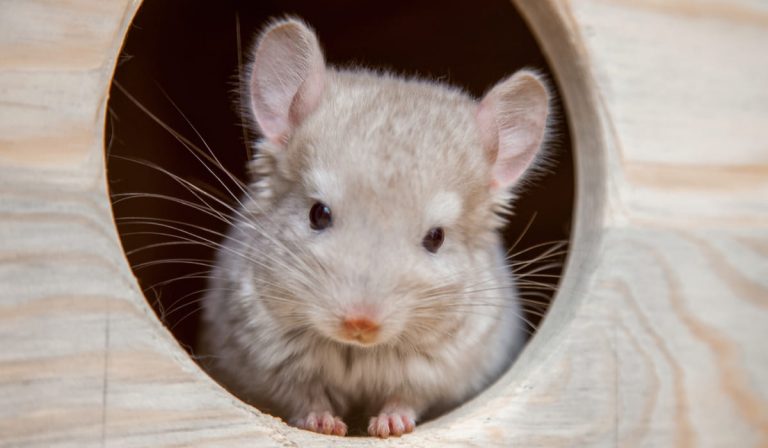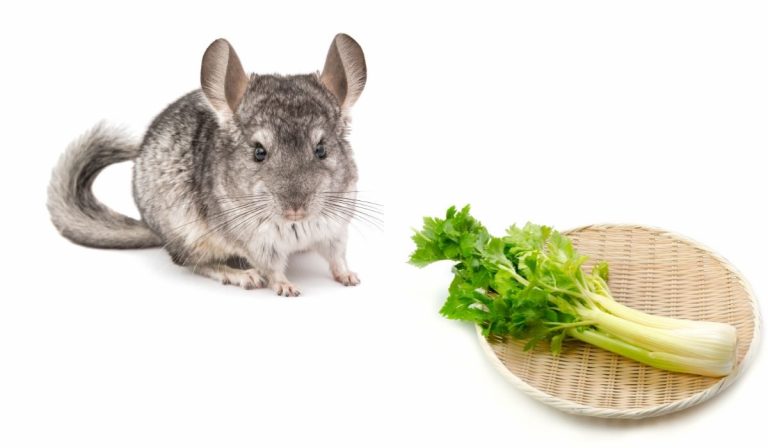What Can Chinchillas Not Eat?
Chinchillas are cute rodents that many want to raise. One common challenge owners face with these animals is what to feed them.
Chinchillas are herbivores and prefer a plant-based diet.
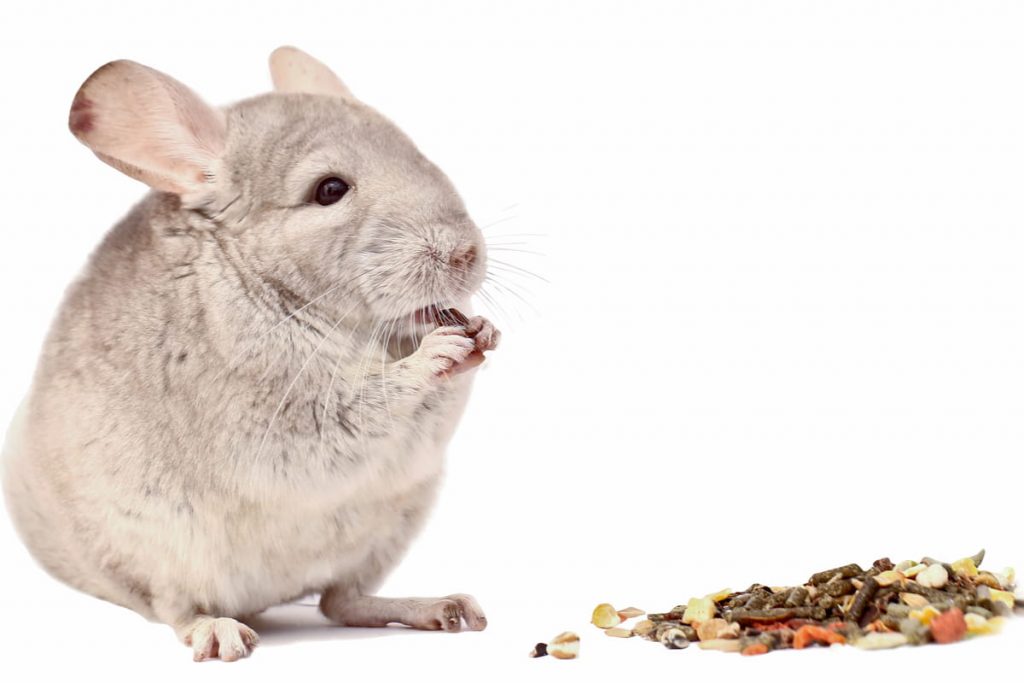
Here is a list of some items that you should not give to your chinchillas:
1. Dog and Cat Food
Foods made for dogs or cats contain various ingredients, some of which are animal products.
For example, fishmeal, bone meal, and other meat ‘meals’ are common ingredients in animal feed.
While such ingredients are safe for dogs, cats, and other omnivorous animals, chinchillas should not eat them.
2. Spilled Food
Do not feed your chinchillas with food that has been exposed for more than 24 hours.
At night, chinchillas are very active and can step, pee, or poop on their food which can contaminate it. You should avoid wasting feed.
You will learn how to prevent feed from wasting later in this article.
3. Bread and Dairy Products
Milk and other dairy products are animal products and not appropriate for herbivores. Chinchillas are herbivorous and do not eat animal-based products.
Although it is made from flour, bread has very few nutrients for chinchillas. It is not a suitable food for them to have, even in small amounts.
4. Avocados
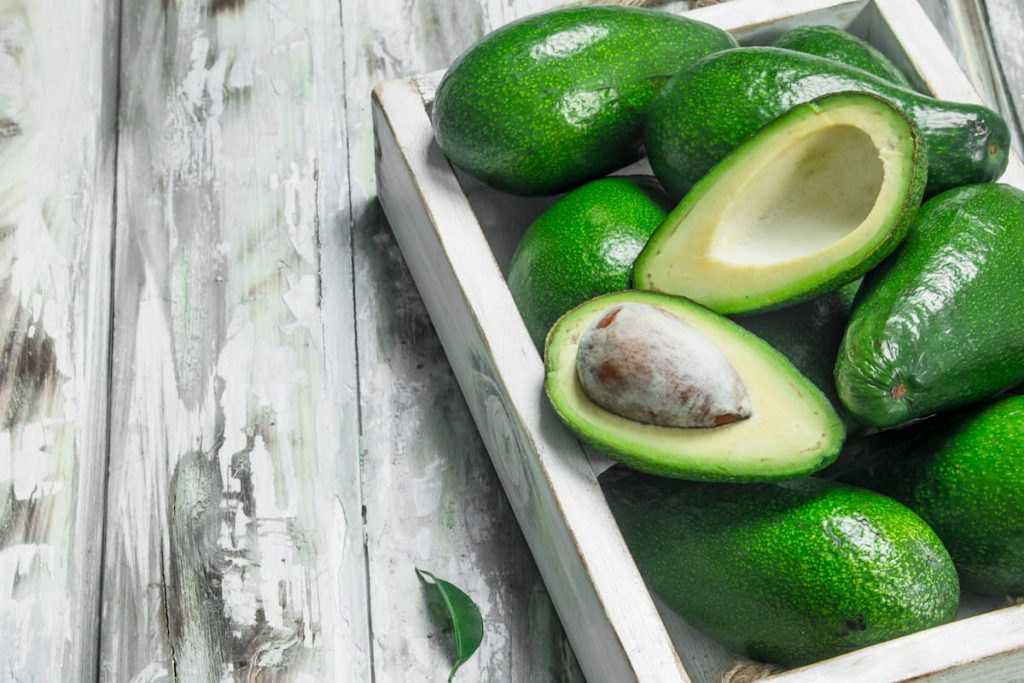
Avocados contain little amounts of persin. Persin is a toxin that can be harmful to chinchillas and other animals such as birds, rodents, etc.
It is advisable not to feed avocados to chinchillas as avocados can upset their stomachs.
5. Corn
Corn is full of carbohydrates and can make your chinchillas obese. Corn is not totally harmful to chinchillas if you can give them a very small quantity (as treats if they love it).
Do not feed your chinchillas regularly with corn.
6. Rice
Just like corn, rice contains a lot of carbohydrates. What’s more, boiled rice contains more easy-to-digest carbohydrates and less fiber, which is the opposite of what chinchillas need.
Do not feed your chinchillas with rice.
7. All-Grain Diet
Chinchillas are not birds. Chinchillas love grains but do not need much of them.
You should only give grains to chinchillas when other fiber-rich foods (soon to be discussed) are given.
Give grains to chinchillas as treats, not their major food.
Now you know what you should not give to chinchillas. What can chinchillas eat? Continue reading.
What Should You Feed Your Chinchillas?
Here are some healthy and recommended food sources for chinchillas:
1. Fresh Grasses
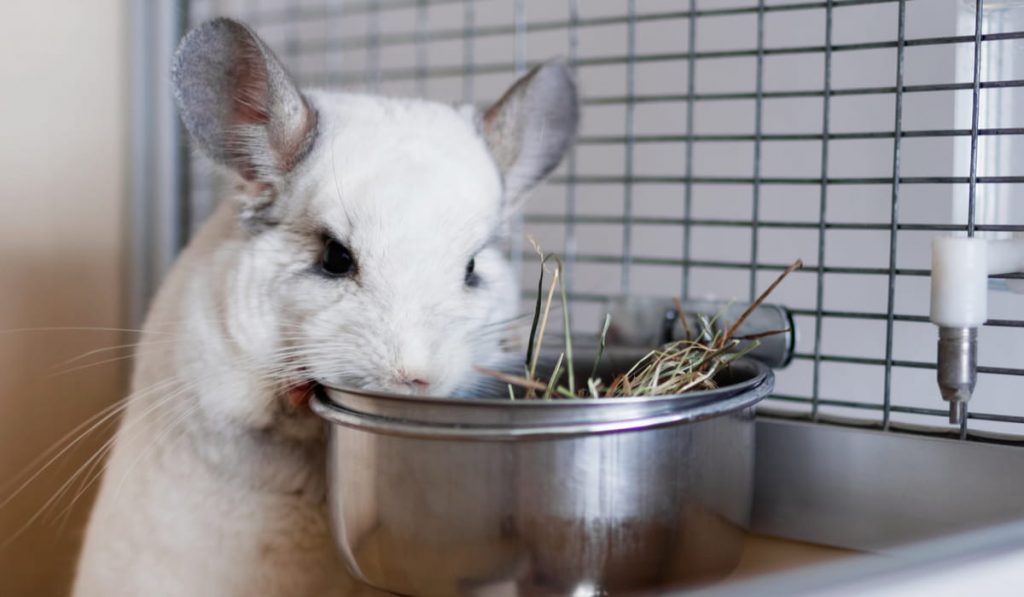
Chinchillas are herbivores, so they eat plant products such as leaves and stems. Plants such as grass are common.
You can give grass to chinchillas. Chinchillas love freshly cut grass.
Before giving grass and leaves to chinchillas, make sure that pesticides have not been applied on the lawn the clippings came from.
2. Hay and Straw
One disadvantage of feeding pets with grass is that leftover grass can develop a foul smell in just a short period. To prevent your room from having the smell of rotting grass, you can use hay (which is dried grass) or straw.
Chinchillas need a lot of hay and straw in their diet. Hay and straw contain a lot of fiber and chinchillas need fiber to aid their digestion.
If you are to feed your chinchillas with pellets, go for hay-based pellets as they are better for chinchillas.
3. Hydroponic Fodder
Making hydroponic fodder for your chinchillas is fun and cost-effective. Rodents such as rabbits, chinchillas, guinea pigs, etc. love baby greens and there’s no better way to get young fresh leaves than to make hydroponic fodder.
Make sure that you properly rinse your fodder before giving it to your chinchillas.
Also, remember to give your chinchillas just the amount that they need to prevent spoilage.
4. Fruits, Seeds (Grains), and Vegetables
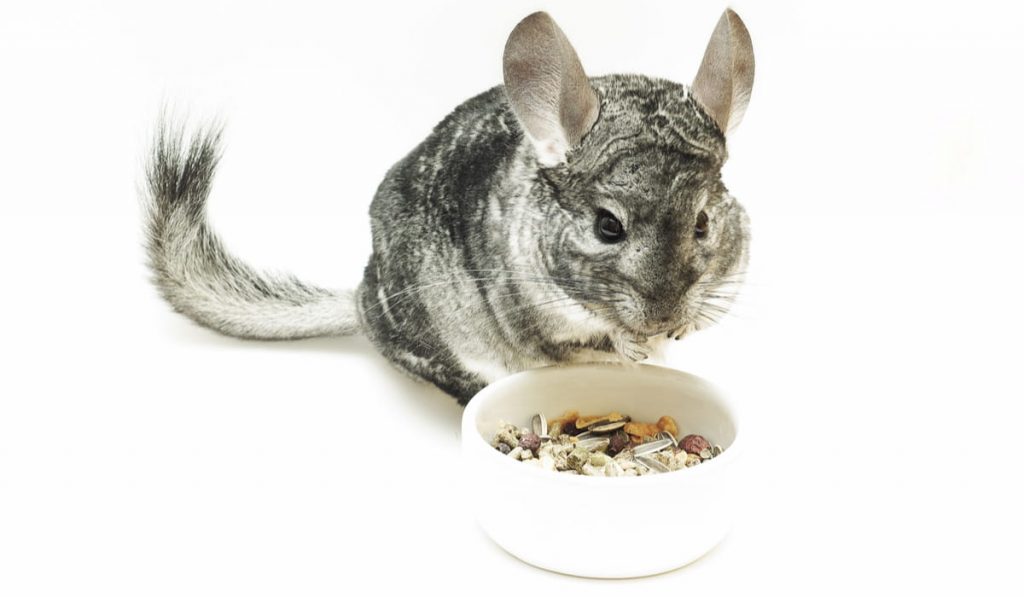
Chinchillas love their fruits. You can give fruits to chinchillas as food and also as treats. Examples of fruits that you can give to chinchillas are:
- Apples
- Cucumbers
- Watermelons
- Kiwi
- Pumpkins
Chinchillas also love cereal grains, but you should only give grains to chinchillas as treats and not their major food because grains contain a lot of carbohydrates.
You should also mix grains with hay and other fiber-rich food sources.
Examples of grains that you can give to your chinchillas are:
- Barley
- Wheat
- Rye
Chinchillas also love vegetables. If you are tired of keeping hay and straw in the cage of your chinchillas, you can switch to vegetables.
Later in this article, you will learn how to switch chinchilla diets.
Examples of vegetables that chinchillas can eat are:
- Lettuce
- Cabbage
- Cauliflower
- Brussel sprouts
Make sure that you give your chinchillas a lot of fruits and vegetables and some grains as treats.
5. Remember to Give Your Chinchillas Fresh, Clean Water
While feeding your chinchillas, always remember to give them clean water.
Change your chinchilla water daily and make sure that the water bottle (or the container you used) is always clean. If you can’t drink it, don’t allow your chinchillas to drink it.
What will you feed your chinchillas?
Related Questions and Answers
I know that you have a lot of questions. Here is the answer:
1. Why are Your Chinchillas Eating Their Droppings?
Have you found your chinchillas eating their dropping? Do not get worried.
Chinchillas undergo a process called caecotrophy which is simply when they eat their liquid poop called cecotropes. Chinchillas, rabbits, and a few other animals are known as pseudo-ruminants.
Pseudo-ruminants are animals that eat excreted (but undigested) particles.
Unlike ruminant animals that chew their cud, pseudo-ruminants do not regurgitate, so they have to excrete the undigested particles (called cecotropes) and eat them again.
Cecotropes are rich in nutrients and bacteria that help chinchillas to digest their food (just the way ruminants need bacteria in their guts).
Chinchillas and other pseudo-ruminants usually excrete cecotropes at night, eat them again, and poop normal hard/dry poop later.
You should not worry if you find your chinchillas eating their cecotropes.
2. How Do You Change the Diet of Your Chinchillas?
If you do not want your chinchillas to continue with their diet, you can change what they eat. To change what they eat, follow the steps below:
- Get the new type of feed
- Introduce their new feed to them while you continue to feed them with the old one
- After 1-2 weeks (when they are used to the new type of feed), stop giving them the old feed.
As a tip, do not immediately stop feeding your chinchillas with what they have been used to. Chinchillas depend on microbes to help break down some food particles and these microbes adapt to specific foods given to the chinchillas.
If you stop giving your chinchillas what they are used to immediately, your chinchillas might digest their food a little bit more slowly.
3. Why Are Your Chinchillas Peeing More than the Usual?
It is normal for chinchillas and other rodents to pee a lot if you give them water-filled foods such as watermelons, cucumbers, etc. The water in these fruits is discharged from the body of your chinchillas and it is normal.
If, however, your chinchillas are peeing more than usual and you did not give them water-rich fruits or other foods with high moisture content, contact your vet.
4. How Do You Prevent Food Waste?
Chinchillas are crepuscular, which means chinchillas are more active in the evening. This means that it would be a waste to feed your chinchillas during the day.
To prevent feed waste, feed your chinchillas in the evening (after you have cleaned their cage) and remove uneaten food in the morning when your chinchillas are less active.
5. How Do You Prevent Your Chinchillas from Peeing or Pooping on Their Food?
To prevent your chinchillas from contaminating their food, you should potty train them.
It is easy to potty train chinchillas so that they can urinate in a litter box, but it is not so easy to potty train them to poop in the litter box (because chinchillas cannot control the way they poop).
To potty train your chinchillas, follow the steps below:
- Get a litter box and litter
- Find where your chinchillas pee a lot (check the back of the cage)
- When you locate a popular peeing spot, place the litter box in the area
- Collect pee-soaked bedding and place it in the litter box
- Whenever your chinchillas pee in a new place, take some of the bedding and place it in the litter box
- Continue the process until your chinchilla finally accepts the litter box as their peeing spot
- Remember to clean the cage regularly
Though it is not so easy, it is doable. Remain determined to potty train your chinchillas.
Final Thoughts
Chinchillas are fun and easy to raise so long as you can feed them with the right food and avoid food that is detrimental to them.
Examples of food that you should not give to chinchillas are avocados, dog and cat food, meat products, and bread.
